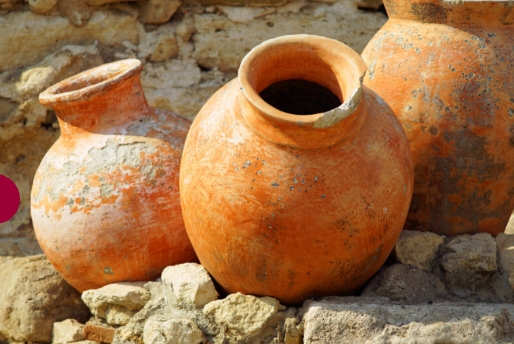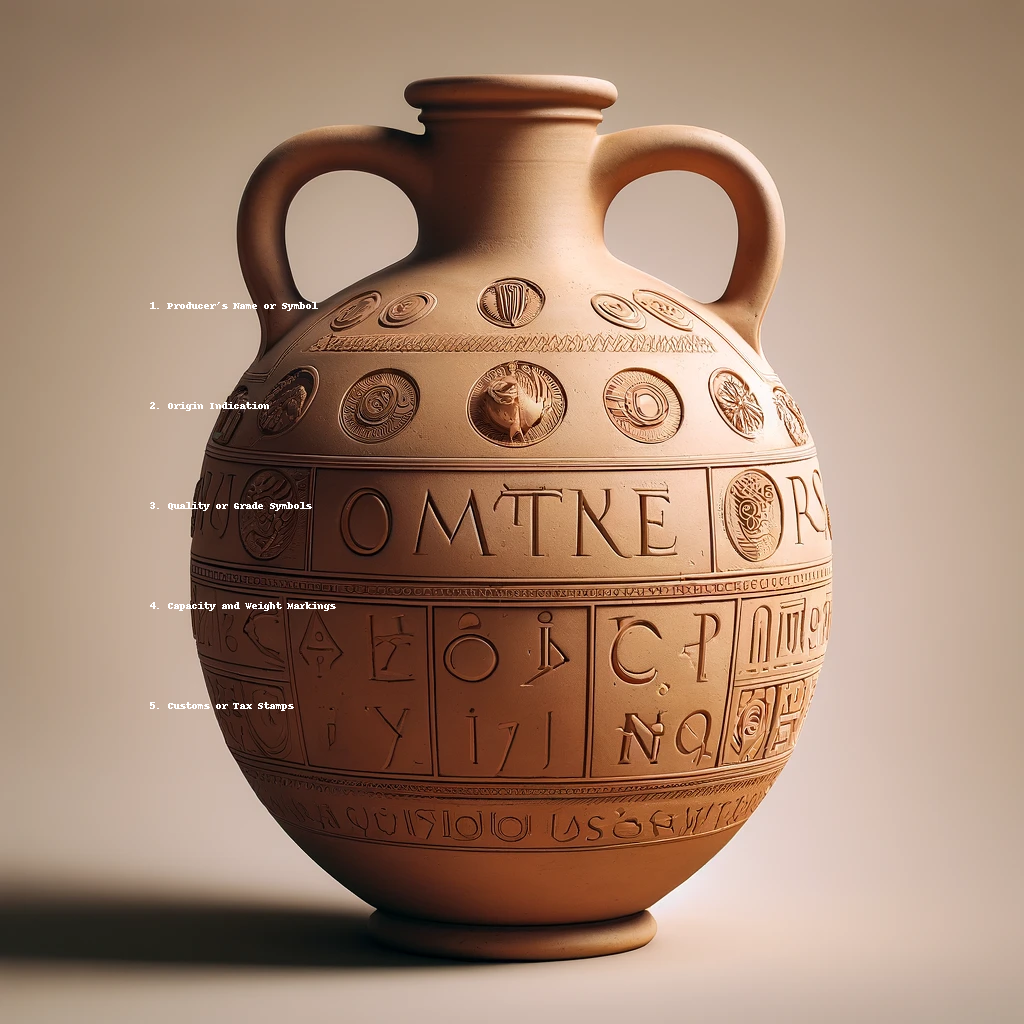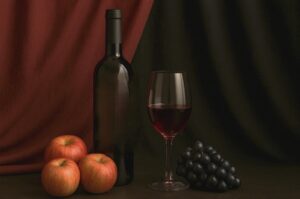Red Wine and the tradition of Amphorae

The commercial preparation of red wine in historic times comes from a process explored by the enthusiasts for the renaissance and use of amphorae in the methods and preservation of wine.
Why it is so effective and how does it work? We looked into a fascinating series of events being staged internationally:
“A legend…inextricably linked to wine, as a precious container for its conservation and transport; a “pioneer” object… in communication, with the different forms that allowed its origin and identification with a territory”
The Alentejo, Portugal on Amphora Day
This location hosts a joyful festival of clay-pot winemaking focusing on the local talha but also featuring winemakers specializing in clay-made wine from the rest of Portugal and around the world.
St Martins Day (November 11) marks the official first tasting of current vintage wines from Alentejo’s talha clay pots.
Traditionally, villagers moved from house to house and between small tabernas or adegas (wineries) sharing food, tasting each other’s wines, and celebrating the fresh vintage, predating Beaujolais Nouveau Day by centuries.
A decade ago this ancient tradition faced extinction, with less than 1,000 bottles produced. Happily, in 2021, close to 200,000 bottles will be produced by at least 15 professional winemakers and many more amateurs.
The modern amphora movement was centred within northern Italy in the 2000s, and looked to Georgia for lessons and answers, not knowing of Alentejo’s unbroken Roman clay pot tradition.
Eventually, Tuscany’s Terracotta Wine 2014 produced the first exclusively focused clay-made wine fair. I introduced the Portuguese to the Northern Europeans, Armenians, and Georgians at Terracotta Wine 2016 (Paul White, World of Fine Wine).
Historic Branding and Storage Preparation for Harvest
As far back as Pompeii, amphorae have been found with what could be the first brand markings for the jars being prepared for the wine to be harvested and shipped:
“Wines in the amphora are a varied heritage of experiences that embrace vines, soils and terroir, but also something self-referential because the amphora itself has a decisive role…In fact, there are producers who use the amphora during fermentation, others only for refinement… refined entirely in amphora and …finally, the amphorae themselves can be different, for shapes, volumes, materials (terracotta, stoneware) and porosity.”
Verona Gallerie Mercatali of Veronafiere.

“A fascinating universe that will be the protagonist of “Amphora Revolution”, the new event created by the Merano WineFestival in collaboration with Vinitaly, scheduled.
A renaissance was called for and this is the wine event dedicated to the world of terracotta jars and the excellence of this particular niche of enology.
The Exhibition wished to present itself as a small “Davos for the development of a sector and a trend that finds more and more admirers, among producers and consumers”. Raul Barbieri, commercial director of Fiera di Verona
“Amphora Revolution” wants to “give visibility to a sector …on a commercial level.
 With 101 companies …the main b2b and b2c marketplace for this particular wine production. “
With 101 companies …the main b2b and b2c marketplace for this particular wine production. “
Attilio Scienza, one of the world’s leading viticulture experts, underlined that:
“This event is a very important communication …At this moment characterised by climate change and dispersion of consumption by young people…a response both to the challenges of the climate and to restore consumers’ relationship with the wine.
‘Amphora Revolution” allows us to return to the origins, to the ancient vines while also spreading their culture, especially among young people who, I believe, could be the first wine lovers of the event.
‘A legend…inextricably linked to that of wine, as a precious container for its conservation and transport; a “pioneer” object… in communication, with the different forms that allowed its origin and identification with a territory.”
Traditional Styles and material:
Talha, qvevri, karas, tinaja, pithos or amphora, wine has been vinified, matured and transported in clay vessels ever since humans discovered the alchemy of a fermented grape… in a world now dominated by oak and stainless steel, amphorae are enjoying a vigorous renaissance.
The international celebration, Amphora Wine Day, convened almost annually since 2018 by Alentejo producer Herdade do Rocim, held on 16 November 2024, attracting 51 producers from seven different countries, but also the diversity of approach and mindset that exists within the amphora wine community.
“Amphora wine is where the ultra-traditionalists meet with the hipsters from New York or Amsterdam,”
Former anthropologist David Picard who, together with his evolutionary biologist wife Catarina Moreira, launched Lisbon urban winery Adega Belem in 2019. About 10% of their 10,000-bottle production is made in amphora.
“A totally different tool to work with oenologically”.
For Picard, the key is to create “a very, very tannic base wine” which responds well to the micro-oxygenating properties of an amphora.
The softened, bright-fruited result is either bottled in its own right or blended with a barrel-matured wine. That tannin management is also key for David Morgado, general manager of Alentejo producer Adega Marel. “We’re in one of the hottest regions, near the border of Spain and Portugal,” he explains.
“Freshness is the main goal.” When it’s so challenging to retain acidity in the grapes, Morgado notes that the talha “brings freshness, and almost salty notes to the wine. You could be near the sea”.

Taste Experience: Old and New Methods
If amphorae can compensate for a lack of acidity, they are also used by producers to achieve balance when the challenge is the direct opposite. “For amphora, we want grapes with strong acidity,” remarks Gianluca Morotti from Piedmontese producer Rocco di Carpeneto. After 10 years, its best results have come not from famously tannic Nebbiolo, but rather Barbera and this variety’s lesser-known genetic offspring, Albarossa.
“Most other producers making Albarossa use new oak to try to tame it, but the wine is… angry,”
In addition to his sprawling ventures across Portugal, Rocim’s Pedro Ribeiro has worked with English producer Gusbourne to create an amphora wine that he indicates is due for release in early 2025.
“The shape of the amphora, that natural bâtonnage, gives roundness to the crazy acidity in English wines,”
Amphorae Revolution
For Ribeiro, the embrace of amphora has been a slow-burn affair that took time to reconcile with his professional training. “If you’d told me 20 years ago that I’d make amphora wines and be at the front of an amphora wine movement, I would have laughed,” he admits.
The catalyst was a sales trip to the US back in around 2010. “I realised that sommeliers were not so interested in Château this or that,” recalls Ribeira. “They were much more interested in things like white wines from Slovenia.”
It was a trend that made Ribeiro reevaluate Alentejo’s own wine heritage. Like many producers, Rocim already made some amphora wine, “but it was really just for family consumption,”, recalls Ribeiro. “Year by year, I gradually started to intervene as a winemaker.”
The hands-off, oxidative approach was initially unnerving: “I’m not a natural wine freak.” At the same time, Ribeiro’s formal wine education allowed him to improve quality; making important tweaks to tradition. The shift …”to now picking at the beginning of August, rather than late September… very low alcohol and very high acidity. This acidity prevents microbial accidents, and it’s also very interesting for the wine.”
The Future of Terracotta Jars
Looking back to our roots in perfecting centuries old techniques. Yet another example of nature, the human taste experience in action, and the rich harvests we can enjoy and share.
link to e-book: History of Amphorae







